
Bilde blad Prunus padus bird cherry hackberry Blomster Blomstrende
Prunus subg.Padus is a subgenus of Prunus, characterised by having racemose inflorescences. Padus was originally a distinct genus, but genetic and morphological studies have shown that Padus is polyphyletic. It has been proposed that all the racemose taxa within Prunus (Padus, Maddenia, Laurocerasus and Pygeum) are incorporated into a broad-sense Prunus subg.
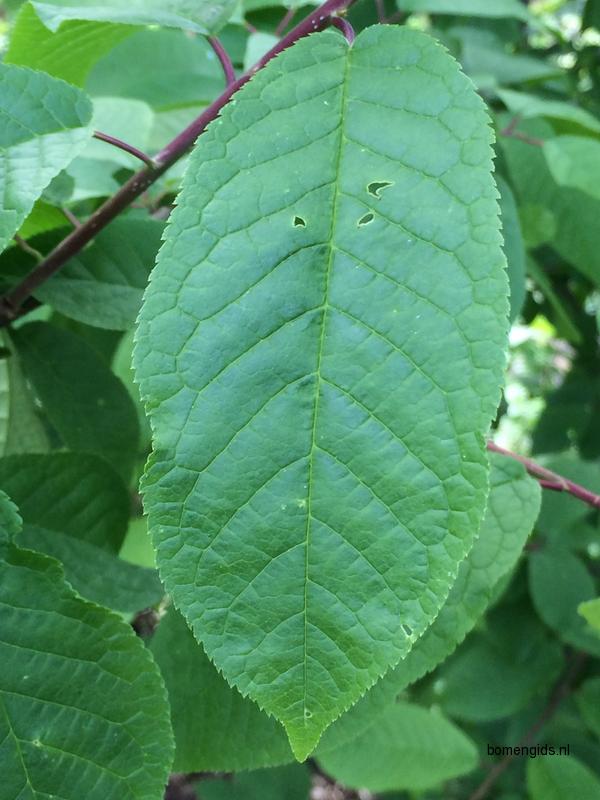
Herken de boomsoort NL Vogelkers; Latin Prunus Padus; UK European birdcherry; GE Ahlkirsche
Prunus padus, commonly called European birdcherry, is a deciduous ornamental cherry tree that typically grows 20-40' tall with a rounded crown. Fragrant white flowers in pendulous 3-6" long clusters (racemes) appear after the foliage emerges in spring. Flowers are followed by astringent, pea-sized, black cherries which ripen in mid-summer.

Prunus padus Green Mile Trees Green Mile Trees
Data distribution and asymmetry in leaf blade Prunus padus L. Sergey Baranov1,*, Igor Zykov2, Aleksandra Prokopenko2, Lubov Fedorova3, and Irina Lipponen4 1Vladimir State University named after A.G. and N.G. Stoletov, Gor'kogo, 79, 600005, Russian Federation 2State Humanitarian Technological University, 22, Zelenaya Street, 142611 Orekhovo-Zuevo,
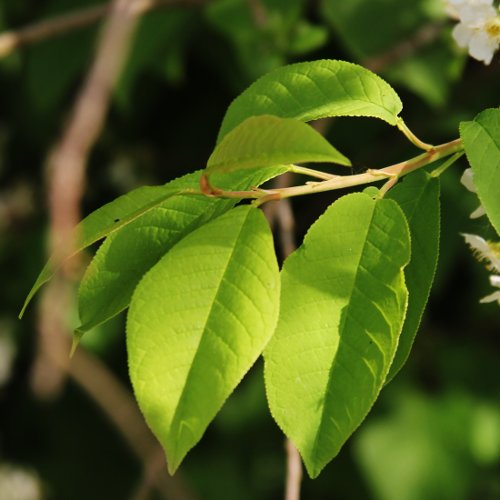
Gewöhnliche Traubenkirsche / Prunus padus (Blaetter) aus dem OnlineHerbarium von Ursula Burri
De donkergroene, ovale tot omgekeerd eironde bladeren hebben een onregelmatig gezaagde bladrand. Grootte 6 - 12 cm. Bloeit in april met afstaande of overhangende trossen van geurende witte bloemen. Vormt zwarte vruchten met een doorsnede van 7 - 9 mm. Landschappelijk gebruik. Winterhardheidszone: 3 Specificaties Hoogte: 8 - 12 (15) m Kroon:

Gewone vogelkers (Prunus padus) Dat doet de natuur goed
600 cm - 800 cm. Grondsoort. elke grondsoort. Toepassingssuggesties. Parkboom, Geschikt Voor Kleine Tuin of Verdraagt Geen Verharding. Winterhardheid. zeer uitstekend (-40,0 tot -34,5°C), USDA zone 3. Bloeivorm. hangende aren.

Graines de Merisier à grappes PRUNUS PADUS The Original Garden
Prunus padus, known as bird cherry, hackberry, hagberry, or Mayday tree, is a flowering plant in the rose family.It is a species of cherry, a deciduous small tree or large shrub up to 16 metres (52 ft) tall. It is the type species of the subgenus Padus, which have flowers in racemes.It is native to northern Europe and northern and northeast Asia, and is grown as an ornamental in North America.
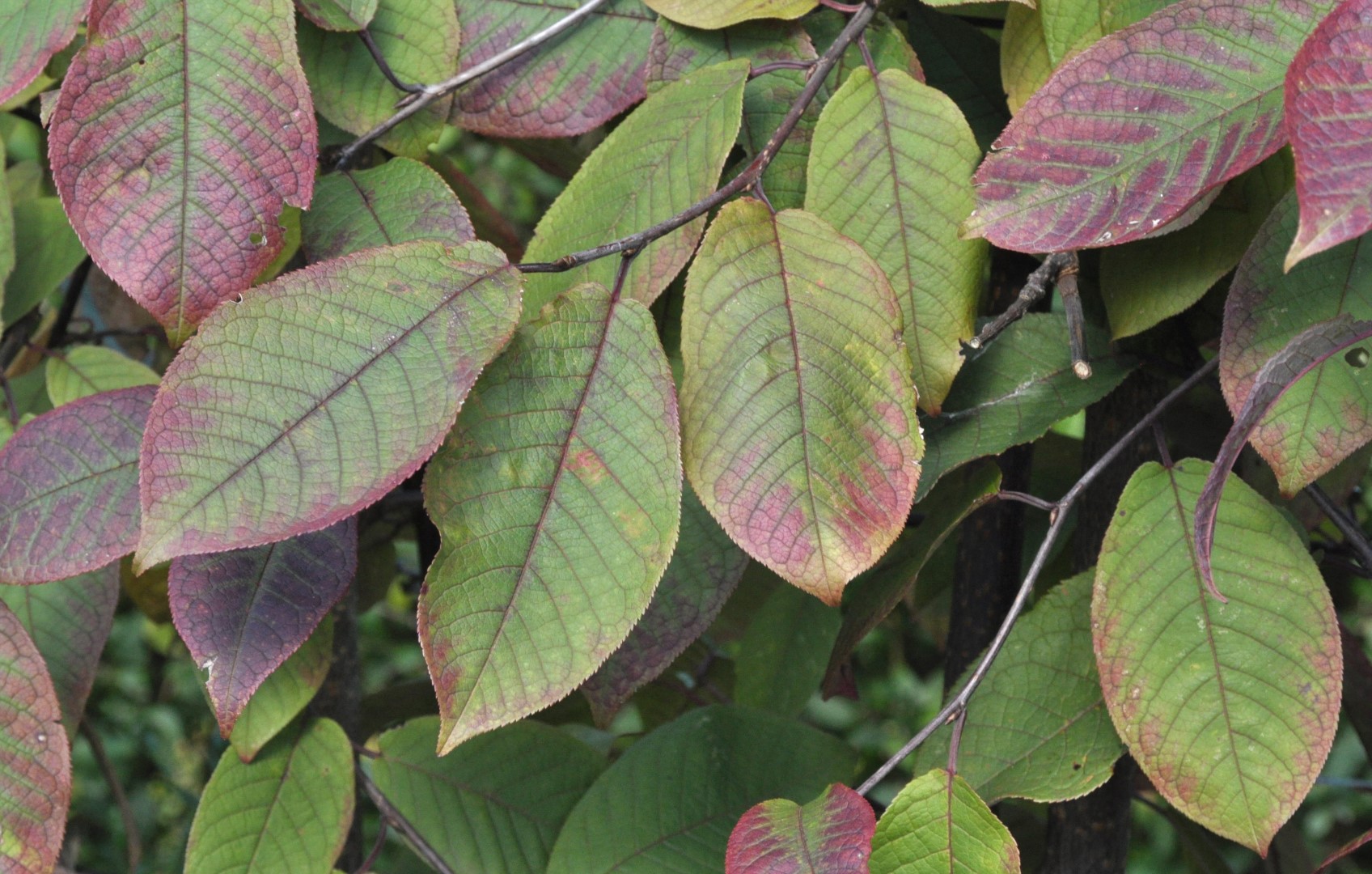
Prunus padus 'Colorata' Prunus padus 'Colorata' Van den Berk Pépinières
144 European Atlas of Forest Tree Species Tree species < 25% 25% - 50% 50% - 75% > 75% Native Chorology Frequency Prunus padus Prunus padus in Europe: distribution, habitat, usage and threats T. Houston Durrant, G. Caudullo Prunus padus L., commonly known as bird cherry or hackberry, is the most widely distributed of the Prunus species and can be found across northern Europe and Asia.

Prunus padus (Rosaceae) image 32148 at
Native to (or naturalized in) Oregon: Deciduous tree, to 30-40 (50) ft (9-12 (15) m) tall, ascending branches, rounded shape. Bark rough, gray to dark brown. Leaves alternate, simple, obovate to elliptic, 6-13 cm long, 3.5-6 cm wide, base wedge-shaped, margin with fine sharp teeth, tip abruptly pointed, dull green above, grayish and hairless.
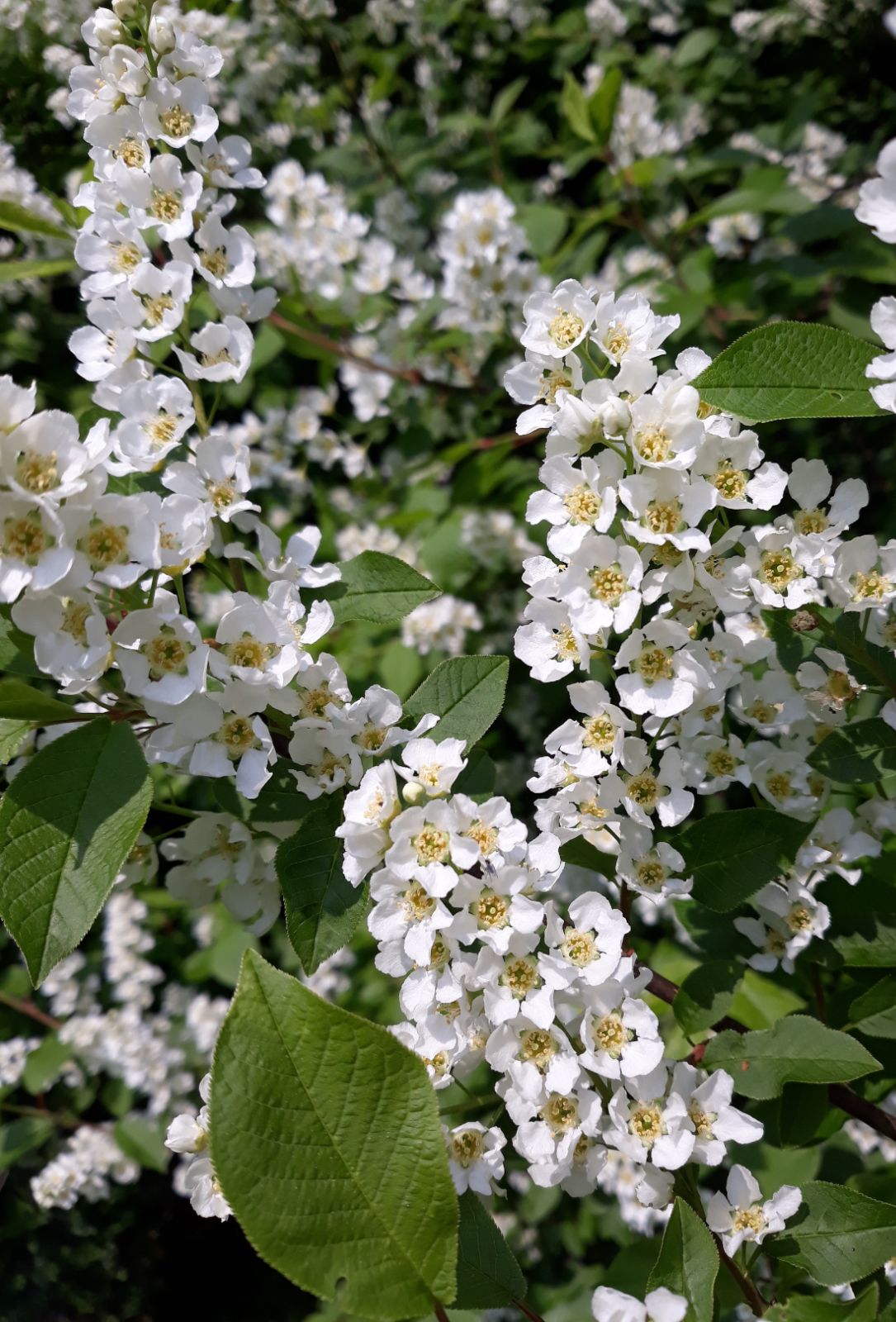
Prunus padus Trees and Shrubs Online
Tree Tolerances. Plant Hardiness Zone: 3 Shade Tolerance: Full Sun pH Tolerance: Drought Tolerance: Low Flooding Tolerance: Moderate

Trees Prunus padus Bird Cherry
Kenmerken Verspreiding Bijzonderheden Naslaginformatie Midden in de lente, in de maanden april en mei zie je de trosvormige bloeiwijzen van de Gewone vogelkers, Prunus padus L., uit de Rozenfamilie. In veel struwelen is het een struik, maar soms kan de soort ook wel uitgroeien tot een 15 m hoge boom in de rijkere bossen, waarin hij graag staat.
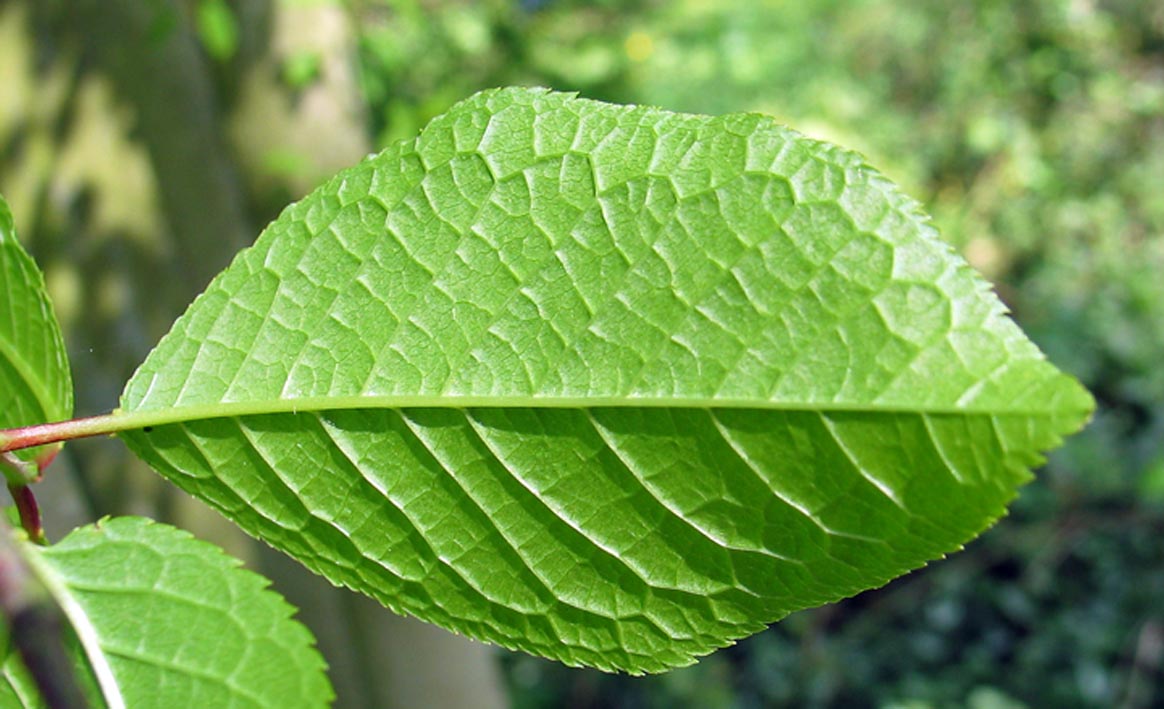
Prunus Padus Vogelkers European bird cherry Bomen herkennen op www.bomengids.nl, recognizing
Trees, not suckering, 50-150 dm, not thorny. Twigs with terminal end buds, glabrous or puberulent. Leaves deciduous; petiole 8-17 mm, glabrous or puberulent on adaxial surface or both surfaces, glandular distally, glands 1-4; blade elliptic to obovate, 5-10 (-13) × 2.5-4.5 (-7) cm, base obtuse to rounded or subcordate, margins serrate, teeth ascending to spreading, sharp.

Trees Prunus padus Bird Cherry
Prunus padus. Prunus padus is a native shrub that grows into a tree. It has a dense and broadly ovoid crown. It attains a height of 8 - 12 (15) m. The branches are a dull grey-brown and when damaged they smell of bitter almonds. The dark green oval to ovoid leaves have an irregularly serrated edge.
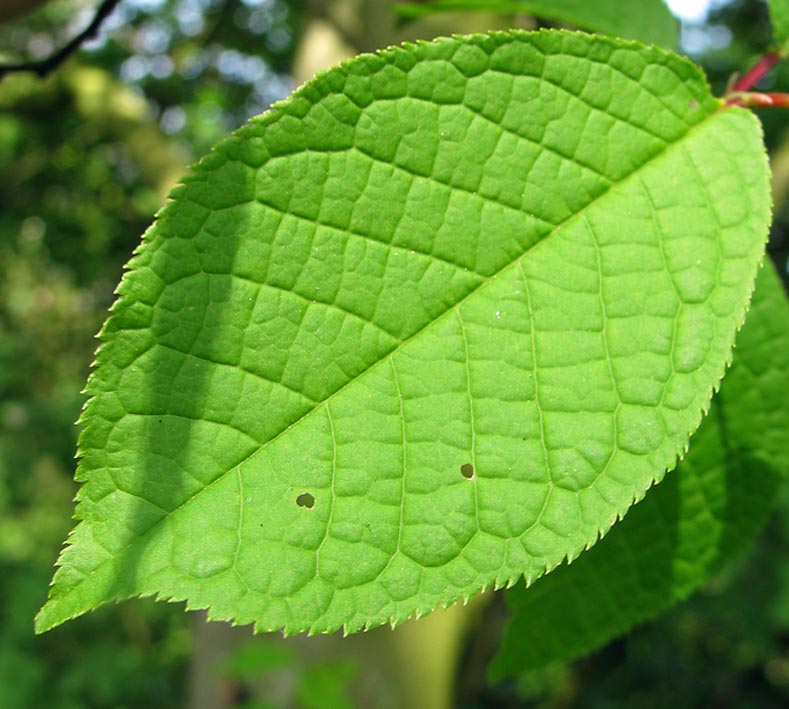
Prunus Padus Vogelkers European bird cherry Bomen herkennen op www.bomengids.nl, recognizing
Racemes up to 8 in. long; leaves with conspicuous tufts of down in the axils of the veins. Raised by the Knap Hill Nursery, before 1914. A.G.M. 1930. An unusually upright young Prunus padus, grown as 'Watereri' and with the characteristically long inflorescences of this selection, at Bicton College, Devon, UK; 7th May 2013.
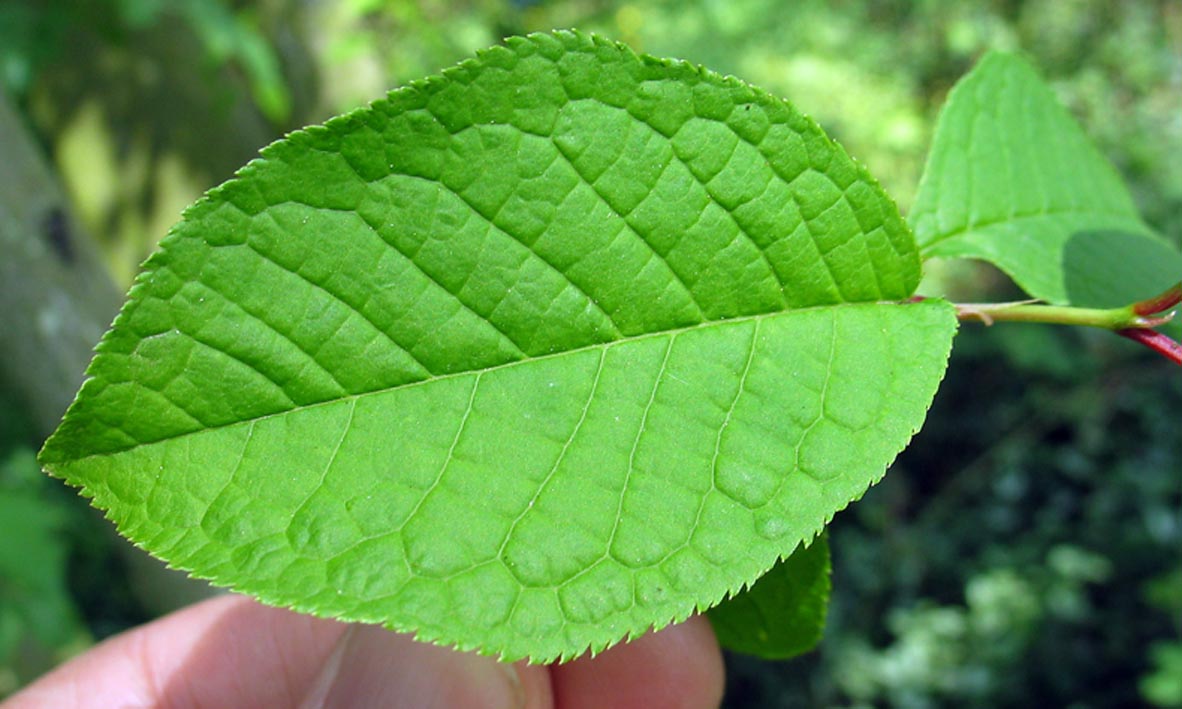
Prunus Padus Vogelkers European bird cherry Dutch treeguide at www.bomengids.nl, European trees
8. Prunus padus Linnaeus, Sp. Pl. 1: 473. 1753. European bird cherry Trees, not suckering, 50-150 dm, not thorny.Twigs with terminal end buds, glabrous or puberulent.Leaves deciduous; petiole 8-17 mm, glabrous or puberulent on adaxial surface or both surfaces, glandular distally, glands 1-4; blade elliptic to obovate, 5-10(-13) × 2.5-4.5(-7) cm, base obtuse to rounded or.
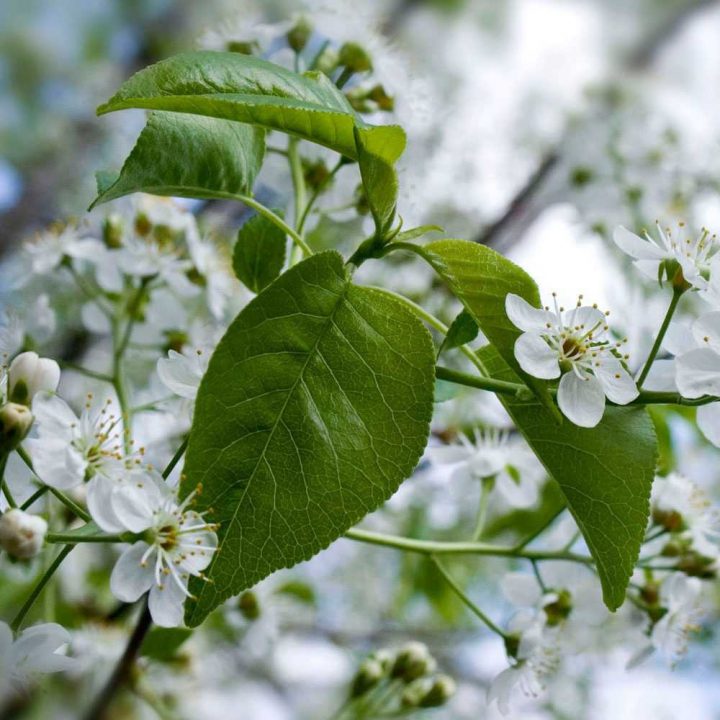
BirdCherry(PrunusPadus)LeafandFlowers Hedges Direct Blog
Gewone vogelkers. Prunus padus is een boom met een prachtige witte bloesem, De vogelkers ruikt ook nog eens lekker. In het najaar krijgt de prunus padus donkere vruchten die veel vogels aantrekt, de vogel kers trekt ook veel vlinders en andere insecten aan. De boom word ongeveer 8-12 meter hoog met een half open kroon. Het is een echte eyecatcher.

Europese vogelkers, Prunus padus kopen
Petit arbuste greffé sur tige, au port étalé, branches érigées et retombantes vers le bas. La floraison est tout le long du rameau et les fleurs ressemblent à de petites roses. Remarquable. Sol fertile, sain, éviter les excès d'humidité et de sécheresse. Plante dont sa remarquable floraison printanière en fait une vedette dans un petit aménagement ou dans une rocaille, en.